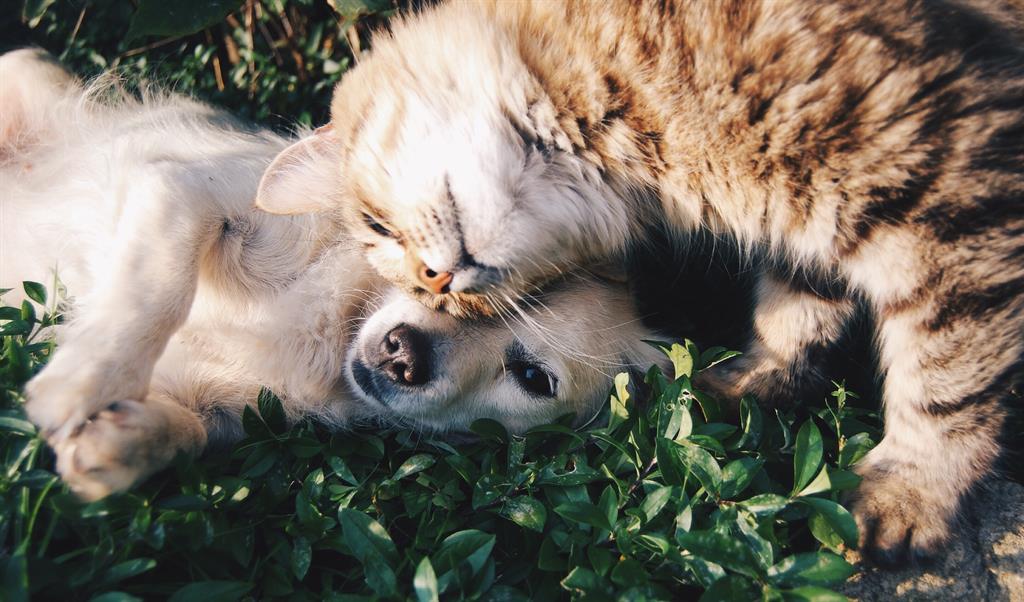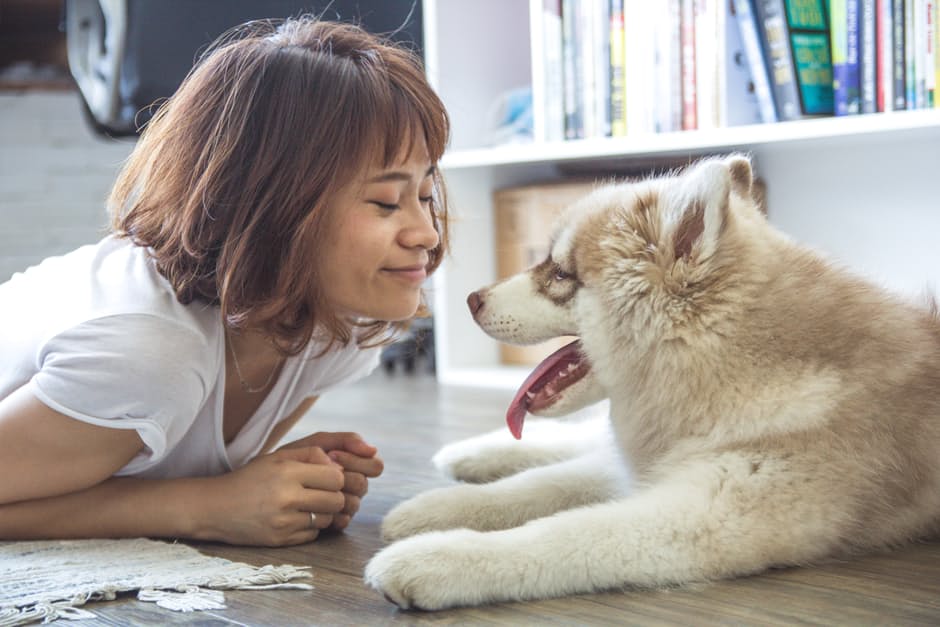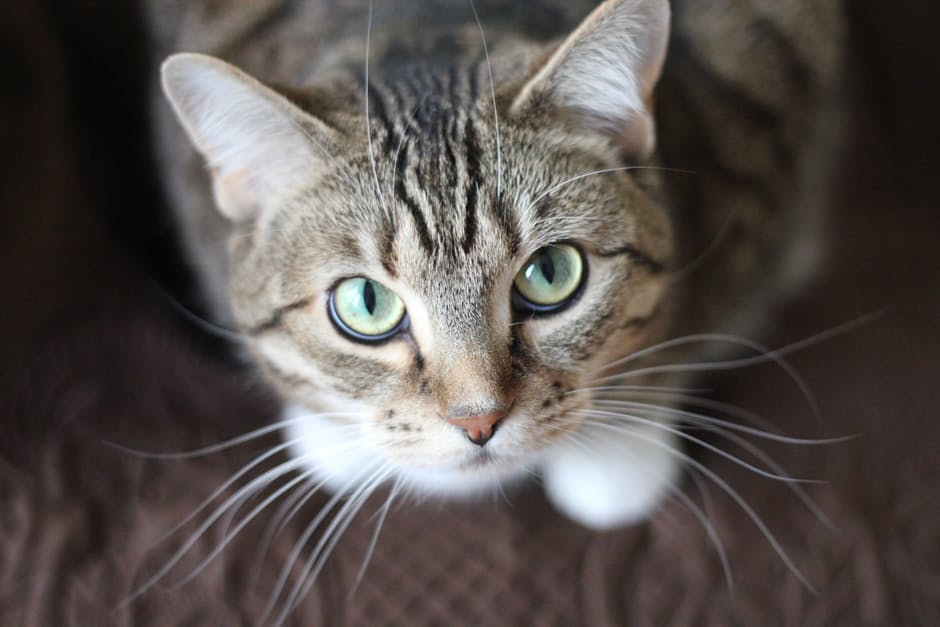Sign up for the Family Tree Newsletter Plus, you’ll receive our 10 Essential Genealogy Research Forms PDF as a special thank you!
Get Your Free Genealogy Forms
"*" indicates required fields
Nearly two-thirds of Americans today have pets, and we spend almost $50 billion a year caring for and pampering them. But when our ancient ancestors first domesticated dogs and cats, the idea was that pets would serve us—not the other way around.
When did we start keeping cats as pets?

Cats didn’t join the family until the advent of agriculture and crop storage, where they proved useful in rodent control. Cats “invited themselves in,” as Smithsonian magazine puts it, probably first in the Fertile Crescent. A cat buried with a human on the island of Cyprus dates from 7500 B.C., and one Egyptian cemetery contained 300,000 feline mummies.
When did dogs become Man’s Best Friend?
Early Greeks and Romans preferred pooches, celebrating them in paintings and sculpture. The Romans imported British hounds as fighting dogs, pitted against lions, gladiators and even elephants. But Roman women also had lap dogs, whose warm cuddles were thought to cure stomachaches. Sentimental inscriptions on canine gravestones from A.D. 200 reflect Romans’ fondness for their dogs: “To Helena, foster child, soul without comparison, and deserving of praise.”
Dogs returned the affection and loyalty, as in the tale of Odysseus’ dog Argos—the only one to recognize his master after he’d spent 20 years at war and at sea. The nonfictional Delta, whose remains were unearthed at Pompeii, wore a silver collar saying he had saved his master from a wolf.
By the first century, dogs also were popular in China, where a breed similar to the Pekingese—very far from its wolf origins—had been developed. Emperor Ling Ti (168-190) gave his dogs the rank of senior court officials, with their own bodyguards.
The Dark and Middle Ages were tougher times for pets, and only wealthy households could afford them. Working dogs predominated, including newly standardized breeds such as bloodhounds, English mastiffs and greyhounds. Lap dogs were seen mostly at court, where they sported ornate collars reflecting the owner’s stature. Dogs also accompanied parishioners to church, serving as furry foot-warmers.

But they weren’t always known to be friends
Although some senior clergy also kept dogs, other church leaders frowned on pet ownership. Food for pets would be better given to the poor, some argued, while others associated “animal familiars” with paganism. During the Inquisition, pet ownership could be used as evidence against accused heretics.
Cats had it worse, especially after Pope Gregory IX’s 1233 edict linked them to the devil. Tens of millions of cats were slaughtered, but felines had the grim last laugh: The rat population soared, possibly worsening the Black Death. Nonetheless, as late as the witchcraft trials of the 16th and 17th centuries, owning a cat was a sign of deviltry.
By then, however, dogs were having their day. Renaissance paintings depicted pooches in scenes of domestic life, often displaying human-like emotions. Mary, Queen of Scots, had an entourage of tiny dogs clad in blue velvet suits—one of which, hidden in her dress, supposedly accompanied her to the executioner’s block in 1587.
A pet by any other name
The word “pet” first appeared about this time. It may have derived from “petty,” meaning “small,” and originally referred to a small child.
Not all pets were furry. In the 18th century, Mozart kept a pet starling for three years; composer and bird supposedly exchanged melodies. When the starling died, Mozart organized a funeral and penned an epitaph for the “starling in the prime of his brief time, whose doom it was to drain death’s bitter pain. Thinking of this, my heart is riven apart!”

The modern sense of pet keeping, like so much else, was largely a Victorian invention. By the mid-1800s, London had nearly 20,000 street vendors selling live animals; pet kidnapping for ransom also became a lucrative enterprise. One of the first competitive dog shows, for pointers and setters, was held in Newcastle in 1859. An 1863 show in Chelsea boasted a thousand entries. The Kennel Club was founded in 1873 to govern this new hobby.
The Victorians also increasingly condemned cruelty to animals, seen as “one outward expression of inward moral collapse.” Britain had passed the first serious animal welfare law in 1822, and the Royal Society for the Prevention of Cruelty to Animals was founded in 1824.
In America, pet birds ruled the roost indoors. The royal governor of Virginia kept 28 cardinals in cages. Andrew Jackson bought an African gray parrot named Pol for his wife, Rachel; it became the president’s pet after her death. Pol also outlived Jackson and attended his funeral, though the parrot had to be removed when it began screeching obscenities in both English and Spanish (apparently learned from the president).
The development of the first commercial dog food, about 1860, and of flea and tick control products in the 1880s encouraged owners to bring dogs indoors. Cats would have to wait until the invention of kitty litter in 1947.
Animal Rights legislation
The protection of pets gained impetus with their popularity. Henry Bergh founded the American Society for the Prevention of Cruelty to Animals in 1866, initially to protect horses’ welfare; the organization soon expanded to cats and dogs. The Humane Society of the United States was founded in 1954. Mark Twain, a “passionate cat lover” who often wore a feline named Lazy around his neck, nonetheless chose a canine as the subject of his 1904 pet “autobiography,” A Dog’s Tale, which helped engender sympathy for pets. In England, animal vivisection at a London Medical School sparked the 1907 Brown Dog Riots.
Dogs and cats have come a long way, from furry servants to household companions. That first wolf who crept close to a primitive human campfire was on to something.
ADVERTISEMENT




